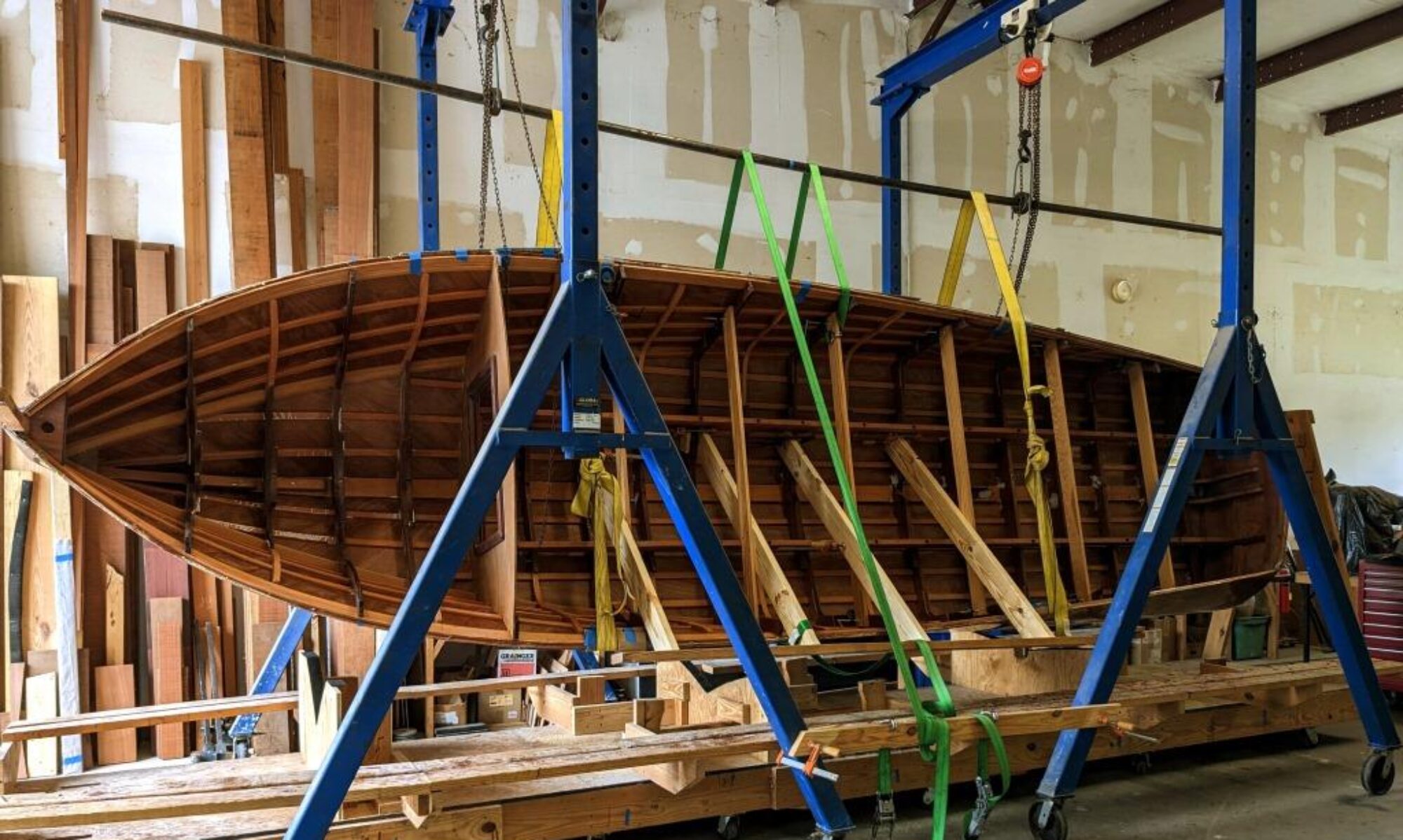
You find out there’s more to know.
Well, that’s often the case here at Ashley River Boatworks, anyway. In my last post, I talked about making a test strip to decide what stain and finish options to use in the Palm Beach 22 runabout we’re building. I wanted to test some conventional oil based stains next to a new staining system by Awlgrip that I used on a previous project–a restoration of a 1949 Chris Craft runabout.

After reading the directions on the stains, I applied them and the next day I came in to find the surprise bleeding of the AwlWood red stain you see here. That was crazy! I hadn’t had that problem when I used it before. Then I went back to the instruction sheet, and here’s what it said:
Suitable application conditions: 4°C–30°C
Relative humidity 30%–95%
Tips
Primer Bleed: Hardwoods with a deep capillary structure may “bleed” Primer as it cures leaving a spotted or bubbled effect. The clear primer can be tipped with a brush if wet, however the coloured primers should be wiped with a rag prior to the primer curing. If necessary, the rag can be moistened with Brushing or Spray Reducer.
Well, for those of us on the western edge of the Atlantic, that 4°C–30°C translates to 39.2°F–86°F. It gets pretty hot and humid here in the South Carolina lowcountry. Guess what the temperature in the shop was when I applied this stain. It was 84°F when I applied it, but it got up to 88°F that day before it cooled off. As much as I might not want to, I have to chalk this one up to boatbuilder-not-following-instructions.

Then, the next day I took the board out in the sunlight to see how the different stains looked, and in less than a minute, the other oil-based stains, which were dry to the touch, started to bleed. The spots were easily wiped off, but it goes to show that what looks and feels dry and fully cured, might not be. Better to wait a little longer than to rush a finish!
